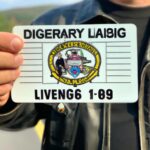Introduction
Are you ready to hit the open road on a motorcycle? Before you rev that engine, there’s one crucial step you need to take: obtaining your motorcycle license. But how old do you need to be to get your motorcycle license? In this article, we’ll explore the age requirements for obtaining a motorcycle license and answer some common questions surrounding this topic.
Importance of a Motorcycle License
First and foremost, let’s talk about why having a motorcycle license is essential. Just like a driver’s license for cars, a motorcycle license demonstrates that you have the skills and knowledge necessary to safely operate a motorcycle on public roads. It ensures that you understand the rules of the road, traffic laws, and safety precautions specific to motorcycling.
Common Questions Regarding Age Requirements
Now, let’s address some of the common questions that arise when it comes to the age requirements for obtaining a motorcycle license. You may wonder: Are there specific age limits for getting a motorcycle license? Do these requirements vary from country to country or state to state? What factors influence the age requirements?
As we delve deeper into this topic, we’ll not only uncover the minimum age requirements for obtaining a motorcycle license but also explore the variations that exist across different regions. So, whether you’re a young enthusiast eager to start riding or someone looking to fulfill their motorcycling dreams later in life, read on to find out everything you need to know about the age requirements for getting your motorcycle license.
Stay tuned for the following sections where we’ll explore the different types of motorcycle licenses, specific age requirements in various states and countries, steps to obtain your motorcycle license, and more. By the end of this article, you’ll have a comprehensive understanding of the age requirements and be one step closer to hitting the road on your motorcycle.
Stay tuned for Section 2, where we’ll dive into the different types of motorcycle licenses and their significance.
Understanding Motorcycle License
Riding a motorcycle is an exhilarating experience, but before you can hit the road, it’s crucial to understand what a motorcycle license entails. In this section, we’ll explore the definition and purpose of a motorcycle license, as well as the different types of licenses available.
Definition and Purpose of a Motorcycle License
A motorcycle license is a legal document that grants individuals the privilege to operate a motorcycle on public roads. It signifies that you have met the necessary requirements, such as passing a written exam and a practical riding test, to demonstrate your competency in handling a motorcycle safely.
The purpose of a motorcycle license is twofold. Firstly, it ensures the safety of both the rider and other road users. Operating a motorcycle requires specific skills and knowledge, and obtaining a license ensures that riders have received proper training to navigate the unique challenges that come with riding a two-wheeled vehicle.
Secondly, a motorcycle license helps enforce traffic laws and regulations. By requiring riders to obtain a license, authorities can ensure that individuals are aware of and adhere to the rules of the road, reducing the likelihood of accidents and promoting responsible riding.
Different Types of Motorcycle Licenses
Motorcycle licenses can vary based on the type of motorcycle you intend to ride. Common categories include:
- Class M1: This license allows you to operate any type of motorcycle or motorized scooter.
- Class M2: With an M2 license, you can ride motorized bicycles, mopeds, and scooters with an engine displacement of 50cc or less.
- Endorsements: Some jurisdictions require additional endorsements for specific types of motorcycles, such as three-wheeled motorcycles or motorcycles with sidecars.
It’s important to familiarize yourself with the specific license types and endorsements available in your region to ensure you obtain the appropriate license for the type of motorcycle you plan to ride.
In the next section, we’ll explore the minimum age requirements for obtaining a motorcycle license and the various factors that influence these requirements.
Steps to Obtain a Motorcycle License
Are you ready to embark on the journey of obtaining your motorcycle license? In this section, we will guide you through the step-by-step process of obtaining a motorcycle license. Whether you’re a beginner or have prior riding experience, understanding the necessary steps is crucial to ensure a smooth and successful licensing process.
A. General Process for Obtaining a Motorcycle License
The general process for obtaining a motorcycle license typically involves several key steps. These steps may vary slightly depending on your location, so it’s important to check with your local Department of Motor Vehicles (DMV) or licensing authority for specific requirements. However, the following steps provide a general overview of what you can expect:
Research and Familiarize: Begin by researching the motorcycle license requirements in your specific state or country. Understand the necessary age requirements, documentation, and any additional prerequisites.
Enroll in a Motorcycle Training Course: Many jurisdictions require or highly recommend completing a motorcycle training course. These courses provide valuable knowledge and hands-on training to enhance your riding skills and safety awareness.
Gather Required Documents: Prepare the necessary documentation, such as identification, proof of residency, and any other specific documents required by your licensing authority.
Written Knowledge Test: Take a written knowledge test to assess your understanding of motorcycle laws, regulations, and safe riding practices.
Practical Skills Test: Demonstrate your riding skills by taking a practical skills test. This test typically involves performing various maneuvers and riding scenarios under the supervision of an examiner.
Obtain a Learner’s Permit: Once you pass the written and practical tests, you may be issued a learner’s permit, allowing you to ride under certain restrictions and conditions.
Practice and Gain Experience: Utilize your learner’s permit to gain on-road experience and practice your riding skills. It’s crucial to adhere to the restrictions and guidelines set forth by your licensing authority during this phase.
Final Licensing Examination: After gaining sufficient experience, you may be required to take a final licensing examination, which could include a road test and additional assessments.
Receive Your Motorcycle License: Upon successfully completing all the necessary tests and requirements, you will be granted your full motorcycle license, enabling you to ride without restrictions.
B. Age-Specific Requirements for Obtaining a Motorcycle License
As we discussed earlier, age requirements for obtaining a motorcycle license can vary across different states and countries. It’s important to understand the specific age restrictions and conditions that apply in your jurisdiction. Some regions may offer different license levels based on age, such as a learner’s permit for younger riders or a full license for those who meet the minimum age criteria.
C. Training and Educational Programs Available
To ensure you have the knowledge and skills necessary to safely operate a motorcycle, various training and educational programs are available. These programs offer comprehensive courses that cover everything from basic riding techniques to advanced maneuvering and defensive riding strategies. Enrolling in these programs not only enhances your riding abilities but also increases your chances of passing the required tests and obtaining your motorcycle license.
Stay tuned for Section 6, where we’ll conclude with a recap of the age requirements for obtaining a motorcycle license and some final thoughts and advice.




